Shri Krishna Bhuvan ran by the Joshi family in Tulsi Baug is where i have been going for decades for my Misal fix. Going there with my baba (dad) in the morning to avoid the traffic and the crowd to get this piping hot Misal has become our father son tradition. Before, we would also get a Misal home for my grandfather and he used to love it as well. Many things have changed in Pune over the years and even this place has renovated from four or six tightly packed community tables with elbow fighting risks – to a more spacious dining area on the floor above the old area. This is still minimal and functional to facilitate quick serving and turnover of diners. However the Misal here is as delicious and as consistent from how i remember from my childhood.
The dish called Misal was recently declared the best vegetarian dishes in a recent contest by a British media publication. Specifically this dish at a restaurant in Mumbai was awarded this honor. However Misal is a sub culture in its own like ramens in japan or pho’s in vietnam. We can get most people to agree that they love misal but they will never reach an agreement on its definition or its redeeming qualities or on the best restaurants serving it. However each person will passionately tell you where the “best misal in the world is at” and will also drag you to try it all the while telling you that this other misal you have liked so far is not even misal.
Such passionate differences come from the broader definition of the dish which allows every chef to mold it to his local produce and food preferences and culture, as well as to lend their personal takes on the dish. While this leads to lot of divided camps i think this is also the beauty of the dish.
Am no food historian but i will try to explain what misal means to me. In Marathi the word translates to “mixture”. There are a few components to a misal. For me i can broadly categorize them into this mixture (the texture component), the rassa (the stew), the tarri or kat (the flavored spiced oil seperated from cooking rassa or created seperately to top the rassa) and the bread to dunk and soak it in. The mixture could consist of lentils, poha (flattened rice cereal), vegetables and sev/farsan (which are textural components like croutons). The lentils can vary from sprouted and cooked matki which is more ubiquitous in pune to moong, peas, dried peas and even garbanzos. The vegetables are usually the easily available boiled potatoes and raw onions and tomatoes for the crunch. Chopped cilantro brings the aromatics. The thin poha (flattendd rice) are used either toasted and spiced with turmeric or the thick ones are prepared by soaking and stir steaming. The sev or farsan are made from a spiced chicpea flour batter and fried in vermicelli or other shapes to be then salted. These act as the textural crispy bites which have soaked in broth to go a bit soft but yet retain some crunch when eating. Don’t be surprised to find some roasted or fried peanuts with skin for additional crunch. With so many options one can imagine how many variations would occur.
However the biggest variations people are very passionate about are the rassa (stew) and the tarri/kat (flavored oil). The combination varies from sweet to flavorful and spicy to searing sweat inducing heat. There are a quite a few fans of the jaggery sweetened rassa at bedekar misal in pune and they find vehement opposition from people who expect misal to have tear inducing heat. The rassa ingredients vary just like a ramen broth can vary. They could include any of onions, coconut (dried or fresh), tomato, ginger, potatos, red chili powder, fresh chili pastes, cilantro, curry leaves. The ground spice powder mixtures could include pounded cloves, cinnamon, corriander, mace, nutmeg etc. The whole spices typically are mustard seeds and cumin.
The flavored oil is created while preparing the rassa where the stew boils and oil separates or is many times prepared and also served seperately as seasoning oil to make the dish hotter and oilier for people who like to do so. It tastes many times of burnt caramelized garlic, onions and red chilly powder and is created as an dark red emulsion of oil and water which floats when added on top of rassa and strongly flavors the dish. For those who like a boldly flavored misal this is where most of it comes from.
The bread is almost always white bread served as rolls called pav (leading to the name misal pav) or as sliced bread (which incidentally was also called pav when we grew up in 80’s in the heart of the city)
The misals thus vary because of these combinations from mumabi to nashik to ratnagiri to nagpur and from pune to kolhapur. Misals with searing heat are almost served everywhere and the famous kolhapur misals are characterized by being minimalistic on mixture using just sev and focusing on the rassa. In pune the trend is for mixture to be a bit more hearty. The newer misal owners are always trying to carve a niche with various approaches as differentiation.
Coming to shri krishna misal me and baba (dad) always order medium hot misal and a side of dahi wati (house-made yogurt set and served in a steel bowl)
As you can see the tarri layer floating on top of the rassa is glowingly red. The top oil layer is a flavorful blend of burnt-garlicky flavored oil and the color seems to be from the milder more fruity red chilli with the heat coming from the sharper variety. If you taste it on its own by dipping a piece of bread in oil you can enjoy the caramelized garlic undertones followed by the sharp enduring heat.
Stirring this up reveals the underlying rassa. Here although its absolutely from a different world and also with dissimilarities, the flavor balancing reminds me of a delicious ginger infused thai coconut and tomato broth. Without adding any sugar i think the balancing sweetness comes from the inherent sugars in the onions, tomatos and the coconut. The cooking of all these together with tempering of mustard seeds, the sharpness of ginger and the borderline bitter citrus hints of turmeric results in this extremely balanced and somewhat refreshing rassa. This combination of rassa and tarri i think for us stands bang in the center balanced between jaggery sweetened rassa and the taste bud burning high octane chili rassas.
For the mixture many vendors take a more is better approach. Here they stay to a few ingredients and maintain their quality.
They choose thin poha since it does not absorb the stew as much and create a mush easily. The crunch comes from raw onions which also provides sharpness every now and then when you bite one. The starch comes from potatoes. The sev is house made fresh frequently and hence is crunchy without any unwanted stale oil flavors. This discipline and attention to detail is what makes this institution consistent and special. They have been doing this for decades and decades being around more than 40 years.
There will also be as many ways of eating misal as there are people at the table. Some will pour the whole bowl of rassa in the mixture and mix and start eating with bread. For me this results in a mush towards the end of it. I have even seen people mix in the yogurt taking the meaning of misal to its complete literal meaning. Others will drop spoonfuls of mixture into the rassa and eat it that way. I like to add my rassa a little at a time with a few squirts from the lemon wedge and thus keep my sev crunchy, while i finish that portion. Its quite common on different days to ask for more mixture or more rassa (ordered as whats called an extra “sample”) depending on your mood that day.
I then drop little pieces of bread again as needed and enjoy my misal every now and then dipping the bread in the oily tarri to keep the taste buds hopping.
Any misal you like, and whichever way you eat it, its a meal full of passion and ritual for all.
On the side or after your meal you can eat the yogurt or buttermilk to cool down your palate. On that note i should mention that the dahi wati served here is delicious. Its made in house and possibly comes from milk of cows which graze at the countryside and pastures. I dont know this for a fact though but you can taste the terroir in what we could call grass fed yogurt. Its nothing like what mom can produce at home where our milk comes from the city dairy although our areas bacteria culture is probably the same. This is also miles better than the yogurt tubs of various companies that have flooded the market which are designed for longevity with additives. This dahi wati if anything, reminds me of the special quality of yogurt you can find towards the countryside or when you go to sinhagad.
We wish this place longevity and hope they can serve million more plates of their delicious misal.


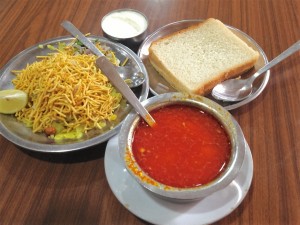
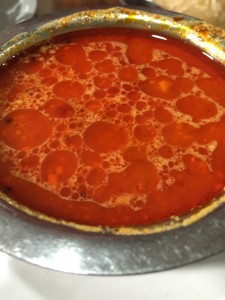
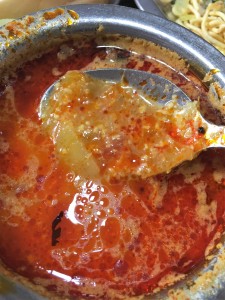
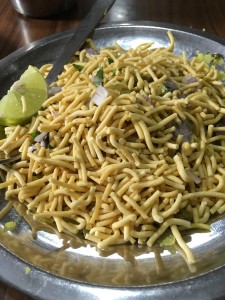
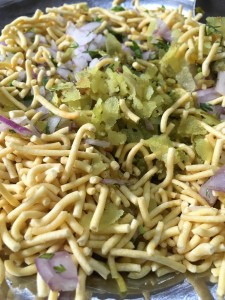
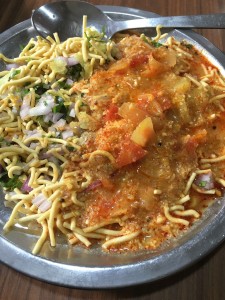
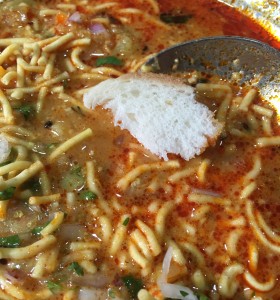
[…] House Misal Recipe. After we posted about me and dad’s favorite place to eat Misal in Pune in this post, i got a lot of messages asking if i make it myself at home and if so, did i have a misal […]